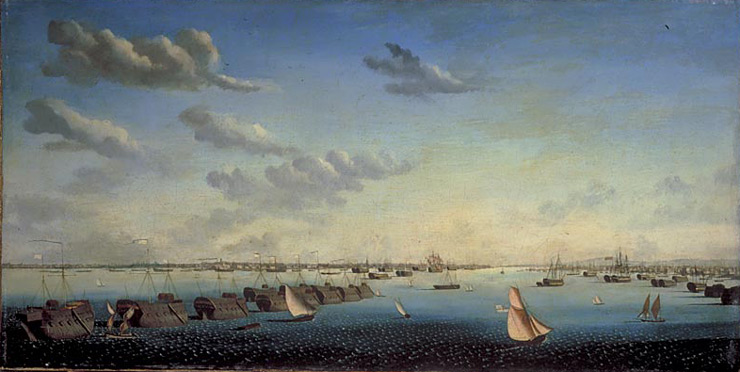 Prison hulks at Portsmouth, England, c1814
Prison hulks at Portsmouth, England, c1814
TLF ID R3011
This is an oil painting on canvas, measuring 50.4 cm x 98.6 cm, of at least a dozen hulks moored at Portsmouth Harbour, England, around 1814.
